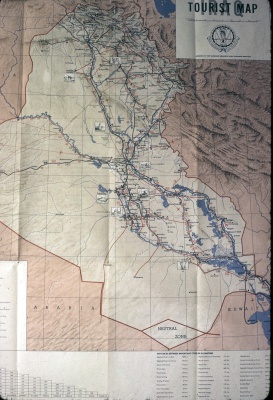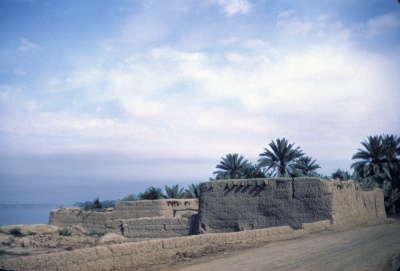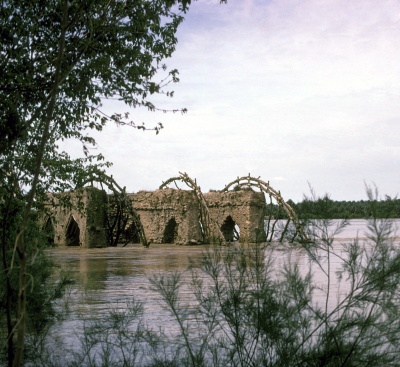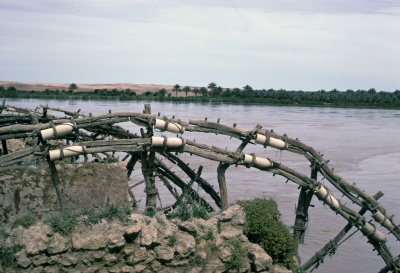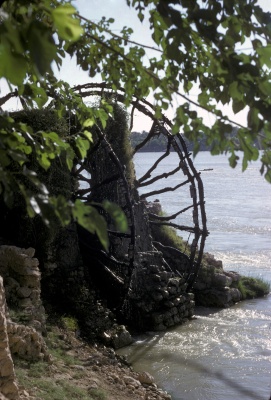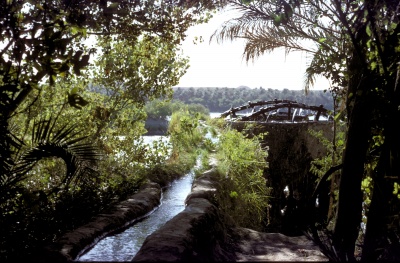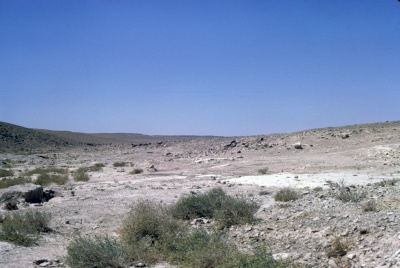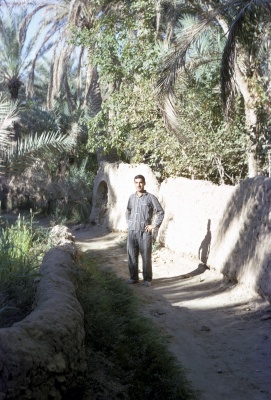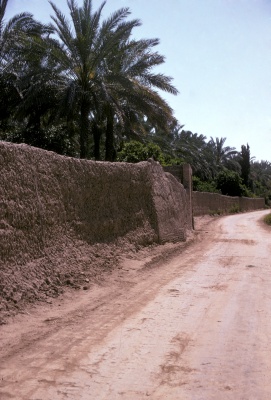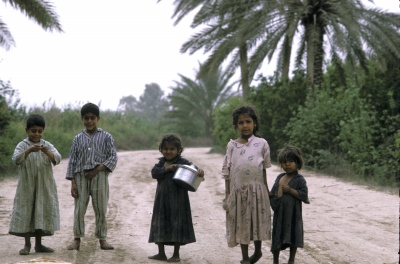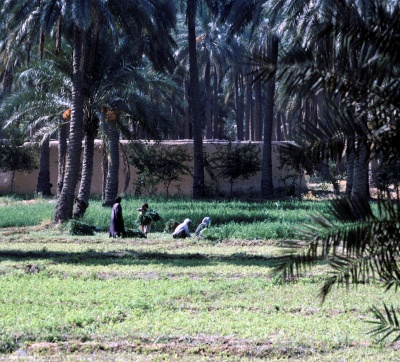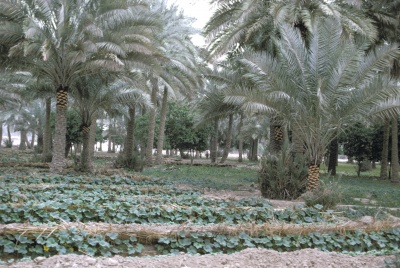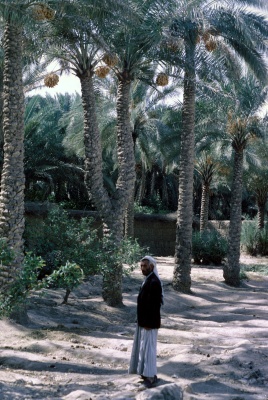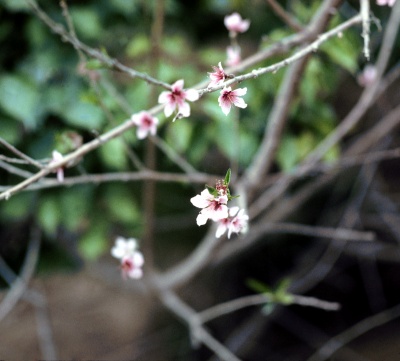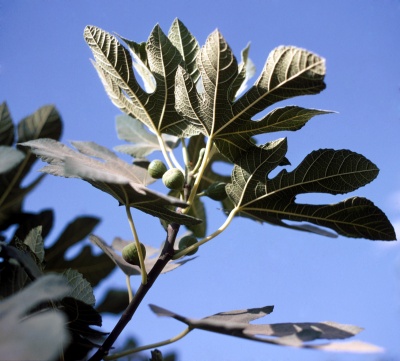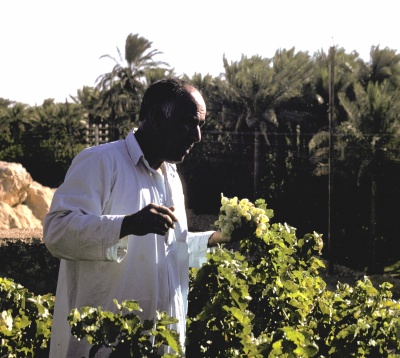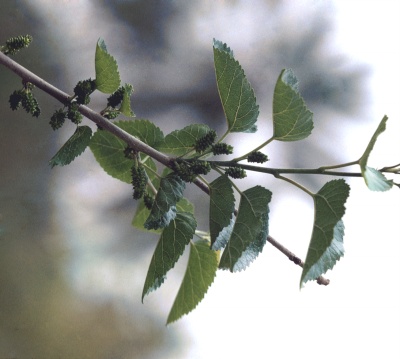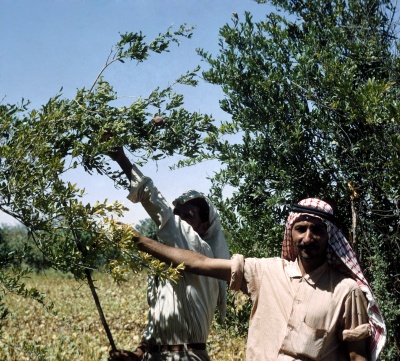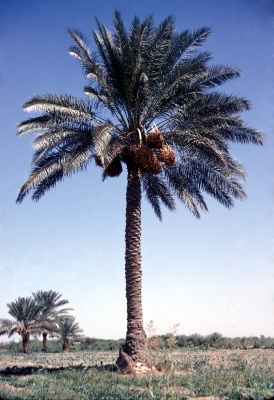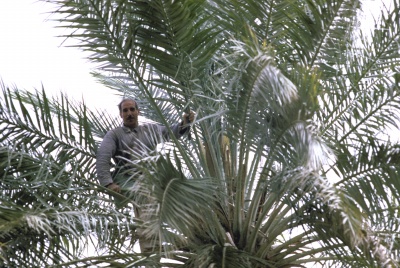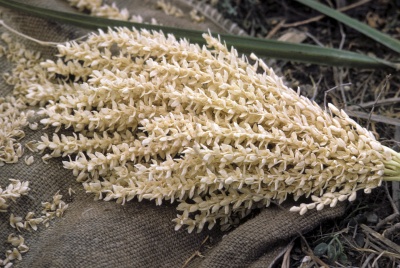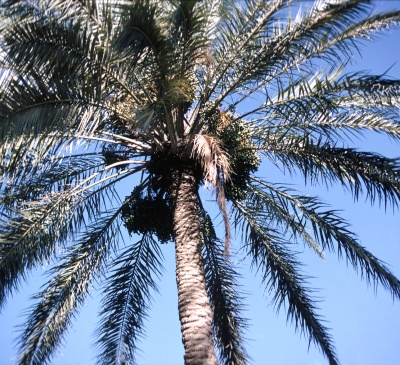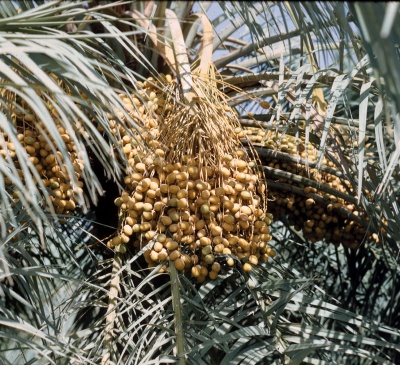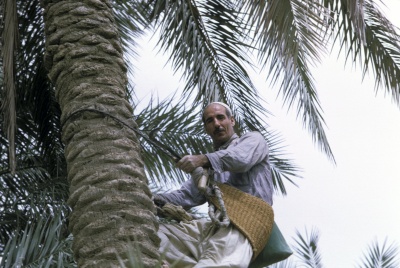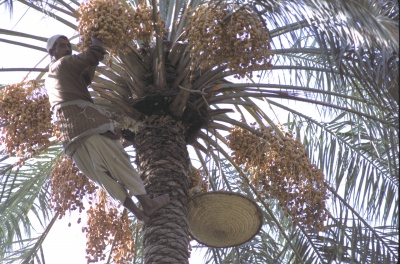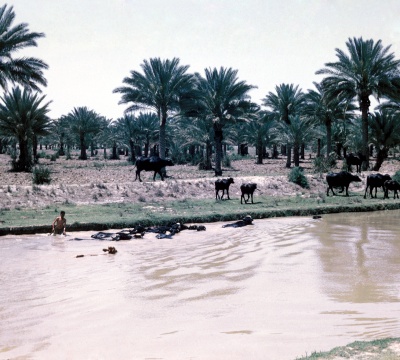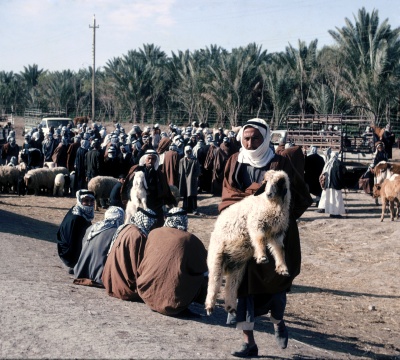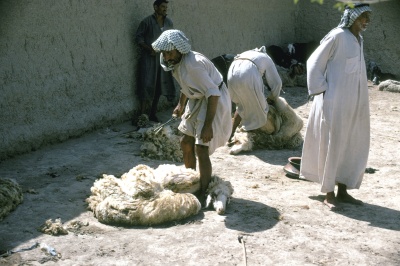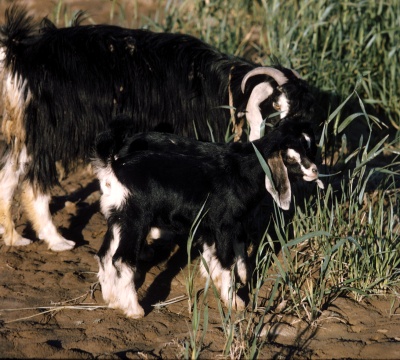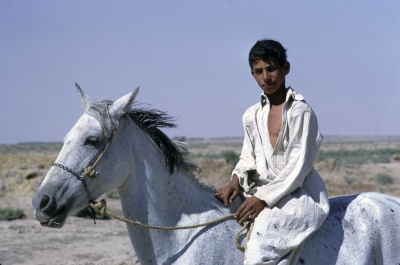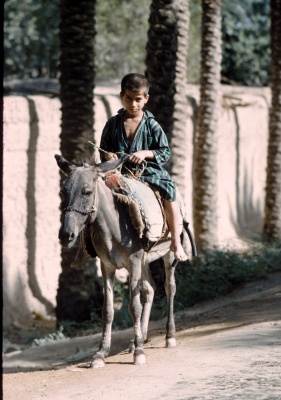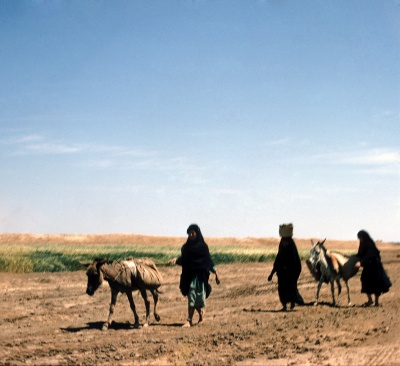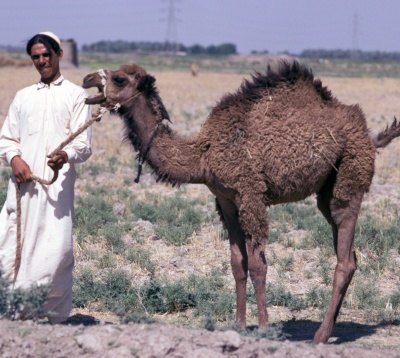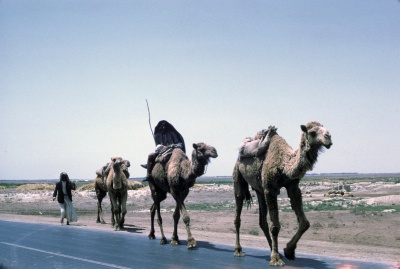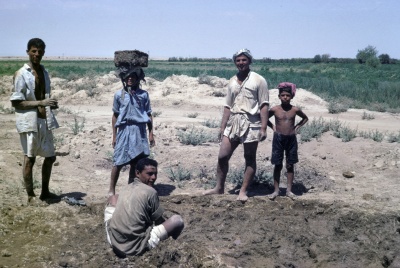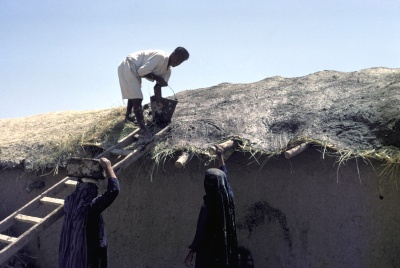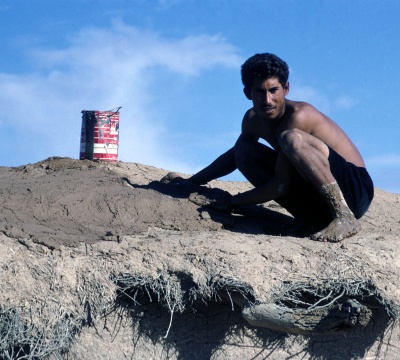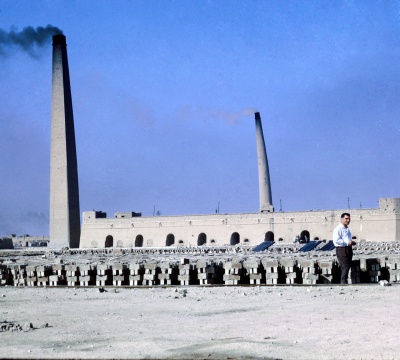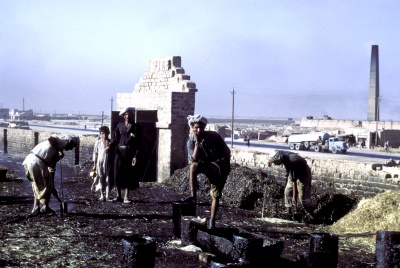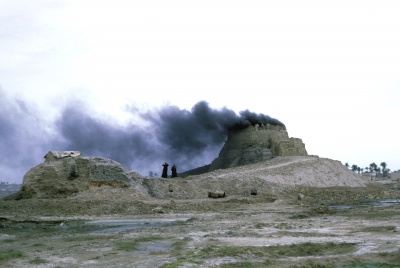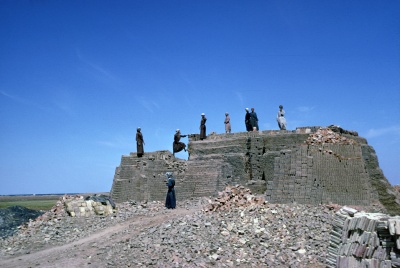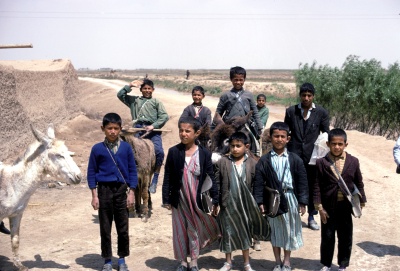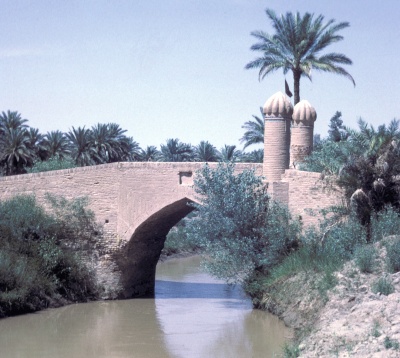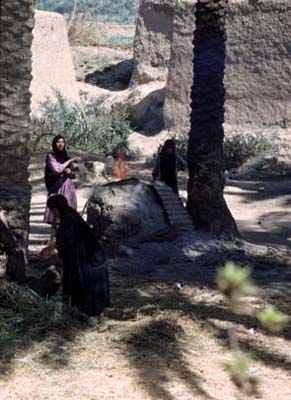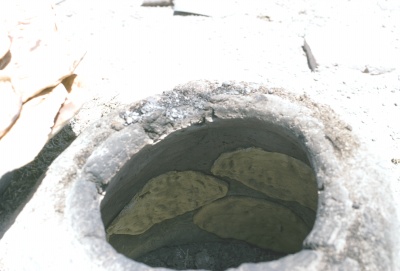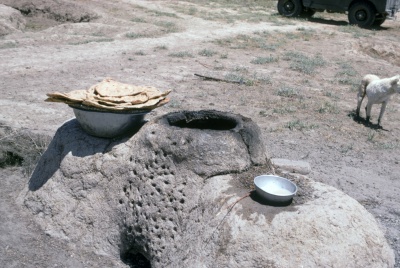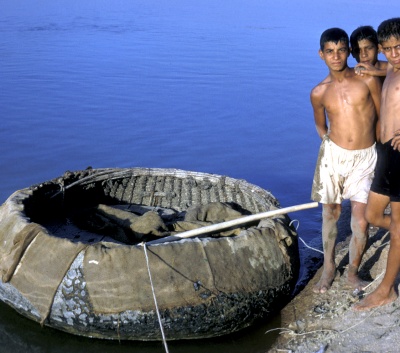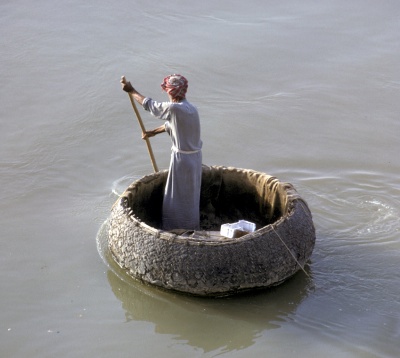Intensive river based farming systems along the Tigris river are located in narrow strips of land along the river bank. These lands are irrigable from the adjacent river. Irrigation is either with traditional waterwheels or through irrigation water intake structures depending on local conditions including topography. Irrigations schemes range from small-scale traditional village types of schemes covering a few tens of hectares to large scale irrigation schemes with hundreds to thousands of hectares of land.
The images of farming systems shown, describe only small-scale traditional and semi traditional irrigation systems. Note that the higher lands located outside these strips, to which no irrigation is feasible, are part of the semi desert. Borders between the irrigable land and the non irrigable land are very sharp. Under Iraq conditions, with temperatures of over 50 C in the summer and with a low annual rainfall of 100 cm, any land, which for topographical reasons or otherwise can not be irrigated is semi desert. Such land is unsuitable for crop production and can at most be used for grazing of camels and goats.
The traditional farming systems along the river banks include crops and livestock husbandry.
a. The cropping system
The cropping system is characterized by three layers of crops.
- The lowest layers of vegetation includes crops such as alfalfa(-lucerne-Medicago sativia L.) a fodder crop, cucumbers, egg plants, water melon, tomato, onions, garlic and various types of leaf vegetables.
- The middle layer of vegetation includes fruits trees such as almond, cassia (an oil crop), citrus, fig, grape, mulberry, pomegranate, ricinus(an oil crop) and others.
- The highest vegetation layer consists of date palms-Phoenix dactylifera.Details of these crops are given as individual images.
b. Livestock
Livestock include water buffalo, sheep, goats and poultry and draft animals such as horses, donkeys and camels.
c. Other aspects
- Repairs of roof and walls of farm houses are made from wattle a mixture of mud, straw and cattle dung.
- Brick making is mainly for sales to urban areas
- Production of flat round bread (gubbuz) made in traditional ovens-tamur. Flour used in the tamur is traditionally grinded hard wheat-triticum durum. Gubbuz, eaten with a meat or vegetable stews or eggs is the main staple food of the Farm family. It is complimented by sour buffalo milk drinks. Food served during Traditional celebrations consist of rice with raisins and almond and roasted lamb or Chicken. In areas near rivers also roasted carp- masgouf is consumed during celebrations.
- Traditional river water transport mode, which is called named gufa. A gufa is constructed of reeds and made waterproof by bitumen, a natural asphalt type of product derived from asphalt sources from the Hit region, some 100 km north east of Baghdad. Already bitumen was used for water proving of boats and house during the Sumerian period 3000 – 2000 BC
Note: Mixed farming systems along the Euphrates River are comparable and some of the slides were actually taken along the Euphrates River.
